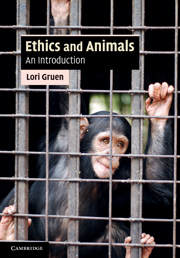Summary
Explorations of our ethical relations to other animals go back to antiquity, but it wasn't until the 1970s, in the wake of social justice struggles for racial and gender equality, that animal ethics was taken up seriously by philosophers and other theorists and the modern animal rights movement was born. When I first started working on animal ethics it was still somewhat on the fringe of both the academy and society more generally, so it is really exciting for me to see a whole academic field emerge, called “animal studies,” and to watch animal ethics become more mainstream. So much theoretical work has been done in the last ten or so years, that I think it is safe to say we are now in the “second wave” of animal ethics.
Introductory texts should try to present all reasonable sides of an issue and I believe I have done that in the pages that follow. However, because I have been thinking, writing, and teaching about animal ethics for over two decades I have well-worked-out views on the issues I present in this book and, as I tell my students, it would be disingenuous to pretend otherwise, so I do not try to hide my considered judgments. My commitment is obvious – other animals deserve our moral attention and their lives matter – and this is the perspective that shapes this book. I do not take one particular philosophical position and explore it in depth in this volume, however.
- Type
- Chapter
- Information
- Ethics and AnimalsAn Introduction, pp. xiii - xviPublisher: Cambridge University PressPrint publication year: 2011

